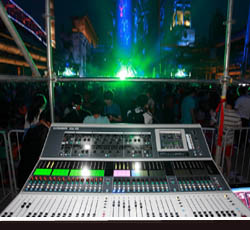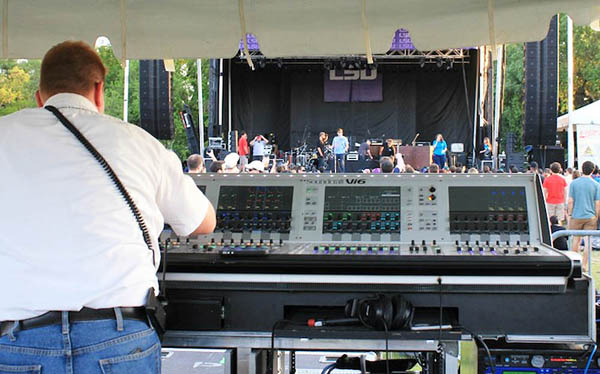
Patching Adventures
Input patching is critical – particularly at festivals. What’s the best way to handle it? If the sound company has the qualified hands and there is enough change-over time, it’s great when stage inputs can be updated for each artist on the bill.
Whether the consoles are digital or analog, this extra effort goes a long way in helping keep things familiar for visiting engineers. And if troubleshooting becomes necessary, engineer(s) are likely to have the stage patches for their artists memorized and know things like “hats are on line 5” and the like. All of this said, it’s simply not all that realistic in most festival situations…
Festival stages are typically patched in a logical order with plenty of lines, and the patches don’t change between acts. If one drummer needs 10 lines and another needs only six, then the latter has four open lines during his set – the overall count remains the same.
“Soft patching” on digital consoles allows laying out input and output channels in any order without making physical patch changes. This is extremely powerful. No longer does snake line 1 have to appear on input channel 1. Each engineer’s preferred console layout can be implemented without impacting the physical patches. But this requires sharing console show files in advance (pun definitely intended) or doing it on site while another act is playing.
It’s common to use matrixes to drive PA outputs such as main left and right, down fills, front fills, delay zones, subwoofers, etc. Many engineers simply distribute their stereo mix across these various zones (either L/R or L/R+sub), while some actually mix to each zone, which requires building specific mixes into each matrix. The exact PA zones and distribution varies per event, per stage, and not all companies do it the same.
But whatever the configuration, it’s imperative that the console’s output patches match the PA. With digital consoles this means soft patching the output patches, and for this reason, system techs need to be careful when loading each act’s show file, as output patching errors or surprises can create a perfect storm and wreck a system real quick.
A couple of times I’ve worked as a guest mix engineer at a festival and then stayed on as a pre-booked system tech. While this isn’t my forte or preference, I found it very interesting to work from the other (host) side of things. Many visiting engineers arrive with an expectation of certain doom, and it was fun to “make their day” with exceptional support and PA organization.
In one case, the long-time mix engineer for a well-known classic rock band clearly wasn’t happy about the digital console at FOH. He just wanted to “get by and get out of there.” I knew this desk inside and out and did everything possible to make it painless for him. He sought to keep it simple, with input faders and EQs accessible, in order, but with no other processing – not even DCA groups.
Further, he actually broke out his console tape and Sharpie and proceeded to label the input channels analog style, in spite of the nice programmable LCD labels! When I pointed out that the tape was only applicable on “Bank A” and would be inaccurate as soon as he banked the faders, he simply replied, “I don’t bank.” The band fit on the 24 input faders without any banking (layering), and by the end of the first song, it sounded absolutely amazing. Simple setup, talented musicians, and great ears.

